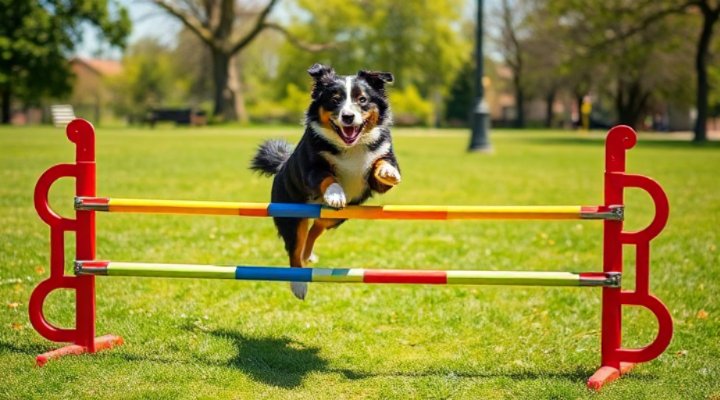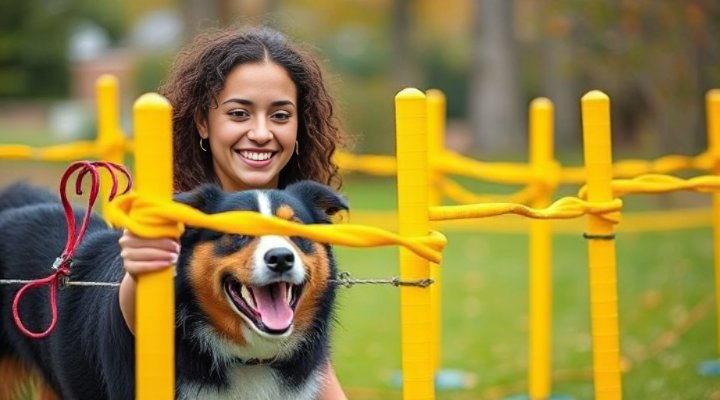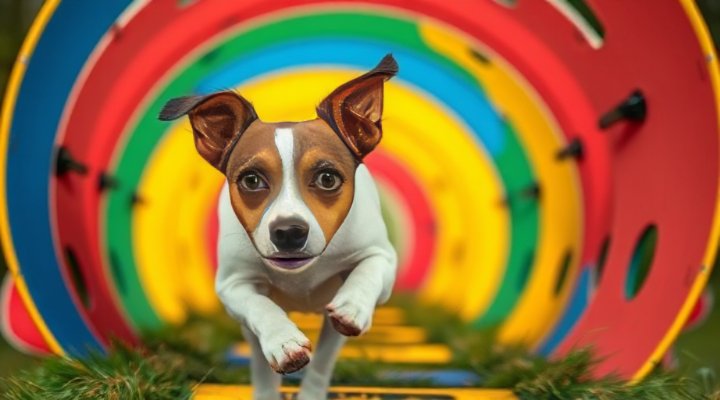Dog agility training is one of the most rewarding activities you can do with your canine companion. Not only does it provide excellent physical exercise, but it also stimulates your dog’s mind and strengthens your bond. Whether you’re interested in competition or just want to have fun, these dog agility training tips will set you on the path to success.

Getting Started with Dog Agility Training
Before diving into complex obstacles, it’s crucial to establish a solid foundation. First, ensure your dog has mastered basic obedience commands like ‘sit’, ‘stay’, and ‘come’. According to the Puppy Training Basics Guide, these fundamental skills are essential for all advanced training.
Start with simple exercises in your backyard or local park. The American Kennel Club (AKC) recommends beginning with jumps set very low to build confidence. Remember, the goal is to make training enjoyable for both of you!

Essential Agility Training Equipment
You don’t need a full competition course to start agility training at home. Here are the basic obstacles to focus on:
- Jumps (adjustable height)
- Tunnel (collapsible for easy storage)
- Weave poles (start with 6 poles spaced widely)
- Pause table (a simple platform)
As mentioned in our Best Dog Agility Training Near Me article, many local clubs offer affordable introductory classes with all equipment provided.

Advanced Dog Agility Training Techniques
Once your dog has mastered the basics, you can introduce more challenging elements:
1. Perfecting the Weave Poles
Weave poles are often the most difficult obstacle for dogs to master. Start with poles spaced wide apart and gradually decrease the distance as your dog improves. The USDA’s Animal Welfare Information Center (AWIC) suggests using positive reinforcement techniques for complex behaviors like weaving.
2. Building Confidence on the A-Frame
Many dogs are initially wary of the steep incline. Begin by letting your dog explore it at their own pace, rewarding any interaction. Our Positive Reinforcement Training article explains how to use treats effectively to build confidence.

Common Challenges in Dog Agility Training
Even the most enthusiastic dogs can face obstacles (pun intended) in their training:
- Distractions: Gradually introduce distractions to improve focus
- Fear of certain obstacles: Never force your dog – go at their pace
- Timing issues: Work on your handling skills to give clear cues
For dogs showing anxiety, our Calming Anxious Dogs guide offers helpful techniques that apply to agility training as well.

Preparing for Agility Competitions
If you’re considering entering competitions, here’s what you need to know:
- Research different organizations (AKC, USDAA, etc.) and their rules
- Attend local trials as a spectator first
- Practice in different environments to generalize skills
- Focus on having fun rather than winning
Remember, as we emphasize in our Dog Training for Beginners guide, patience and consistency are key to success in any dog sport.
Related Keywords
dog sports, canine agility, agility training for beginners, how to train a dog for agility, best breeds for agility, dog fitness exercises, mental stimulation for dogs, positive reinforcement training, dog obedience training, fun activities with dogs
